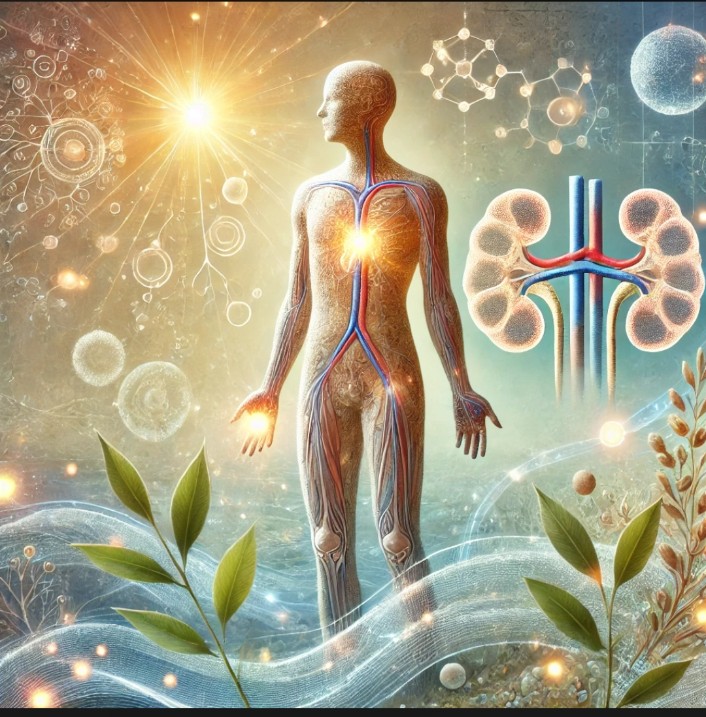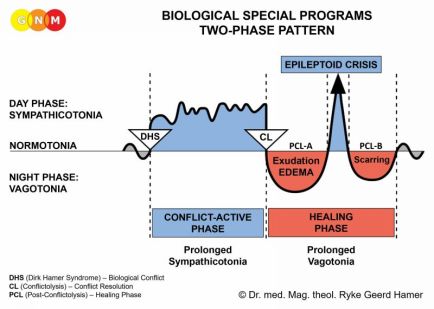Resolve Diabetes
Here’s a detailed breakdown of diabetes (both Type 1 and Type 2) according to Germanic Healing Knowledge (GHK), covering the root conflicts, active conflict phase, and healing phase.
Germanic Healing Knowledge (GHK) on Diabetes
In GHK, diabetes is seen as the body’s biological response to specific emotional conflicts. The condition is divided into two primary categories, each with its own set of underlying conflicts and phases:
- Type 1 Diabetes
- Biological Conflict: Type 1 diabetes is linked to an “attack” or “existential conflict,” often related to feelings of life-threatening fear or intense shock, especially at a young age. This might arise from experiencing situations that create a sense of powerlessness or a fear for survival. Common examples include conflicts involving separation from loved ones, traumatic experiences, or instances where the child perceives a lack of emotional support.
- Conflict Active Phase: In the active phase, the pancreas reduces its insulin production as a response to this perceived danger. The body prepares itself to handle extreme stress or emergency situations by focusing on essential survival responses, which may deprioritize normal insulin regulation.
- Healing Phase: When the conflict is resolved—perhaps through emotional healing, new supportive environments, or feeling safe—the body starts producing more insulin as it rebalances itself. However, in Type 1 diabetes, if the conflict remains unresolved or recurs frequently, the insulin-producing cells may become permanently damaged, leading to a long-term insulin deficiency.
- Type 2 Diabetes
- Biological Conflict: Type 2 diabetes is more commonly linked to “resistance” or “territorial anger” conflicts. This typically involves issues where an individual feels held back or blocked, either financially, professionally, or in their personal life. People with Type 2 diabetes might feel unable to move forward or make progress, often due to societal expectations, financial constraints, or feeling undervalued.
- Conflict Active Phase: During the conflict-active phase, the liver increases glucose release as the body prepares to handle perceived external threats or stressful situations. This excess glucose gives the body the energy needed to “fight or flee” in response to the frustration or anger. Insulin resistance increases as the body remains in a state of heightened alert.
- Healing Phase: When the person resolves the conflict—perhaps by finding acceptance or creating a better life situation—the insulin resistance reduces as glucose metabolism returns to normal. However, if the conflict persists or reactivates frequently, the body’s cells remain resistant to insulin, leading to the chronic condition known as Type 2 diabetes.

Symptoms and Phases in GHK
- Conflict Active Phase (Both Types)
- Type 1 Diabetes: Symptoms might be subtle initially, as the body’s primary focus is on survival rather than insulin production. Over time, chronic stress without resolution can result in sudden increases in blood sugar and other signs of pancreatic stress.
- Type 2 Diabetes: In the active phase, increased insulin resistance leads to higher blood sugar, often with symptoms like fatigue, increased thirst, and frequent urination. These signs indicate the body’s response to a prolonged resistance or anger-related conflict.
- Healing Phase (Both Types)
- Type 1 Diabetes: After conflict resolution, insulin production may return temporarily if the damage is not extensive, but it usually requires external insulin support if the pancreatic cells are significantly damaged.
- Type 2 Diabetes: The body begins to respond to insulin more effectively as the conflict resolves. Blood sugar levels may improve, though sustained lifestyle changes may be necessary to maintain this improvement.
Why Young People Develop Diabetes
According to GHK, younger individuals may develop diabetes if they experience intense, unresolved emotional conflicts during formative years. In the case of Type 1 diabetes, situations where a child feels they lack control over their environment or cannot express their needs may lead to a perceived survival threat, causing the body to enter a conflict-active phase. Type 2 diabetes may manifest in younger people if they experience chronic feelings of anger or frustration over limitations or expectations placed on them, leading the body to respond with heightened glucose levels as it prepares to handle this persistent “threat.”

Healing Through GHK Principles
From a GHK perspective, diabetes can be approached by identifying and addressing the emotional root cause, rather than focusing solely on physical symptoms. Key steps include:
- Conflict Awareness: Understanding and recognizing the specific conflict that triggered the diabetes is essential. This involves exploring personal experiences or past events that may have been a source of deep existential or territorial stress.
- Emotional Resolution: Working towards resolving these conflicts through counseling, introspection, or other support systems can help shift the body from the conflict-active phase into the healing phase.
- Lifestyle Adjustments: Since recurring conflicts can re-trigger symptoms, maintaining emotional well-being and managing stressors is vital to prevent a relapse.
Summary
GHK views diabetes as a complex but resolvable condition with roots in unaddressed conflicts. By resolving these conflicts, the individual may allow the body to gradually shift out of survival mode, reducing blood sugar imbalances and addressing the condition at its core. This perspective offers a holistic view of diabetes as more than just a metabolic disorder, focusing instead on emotional health and conflict resolution for true healing.

